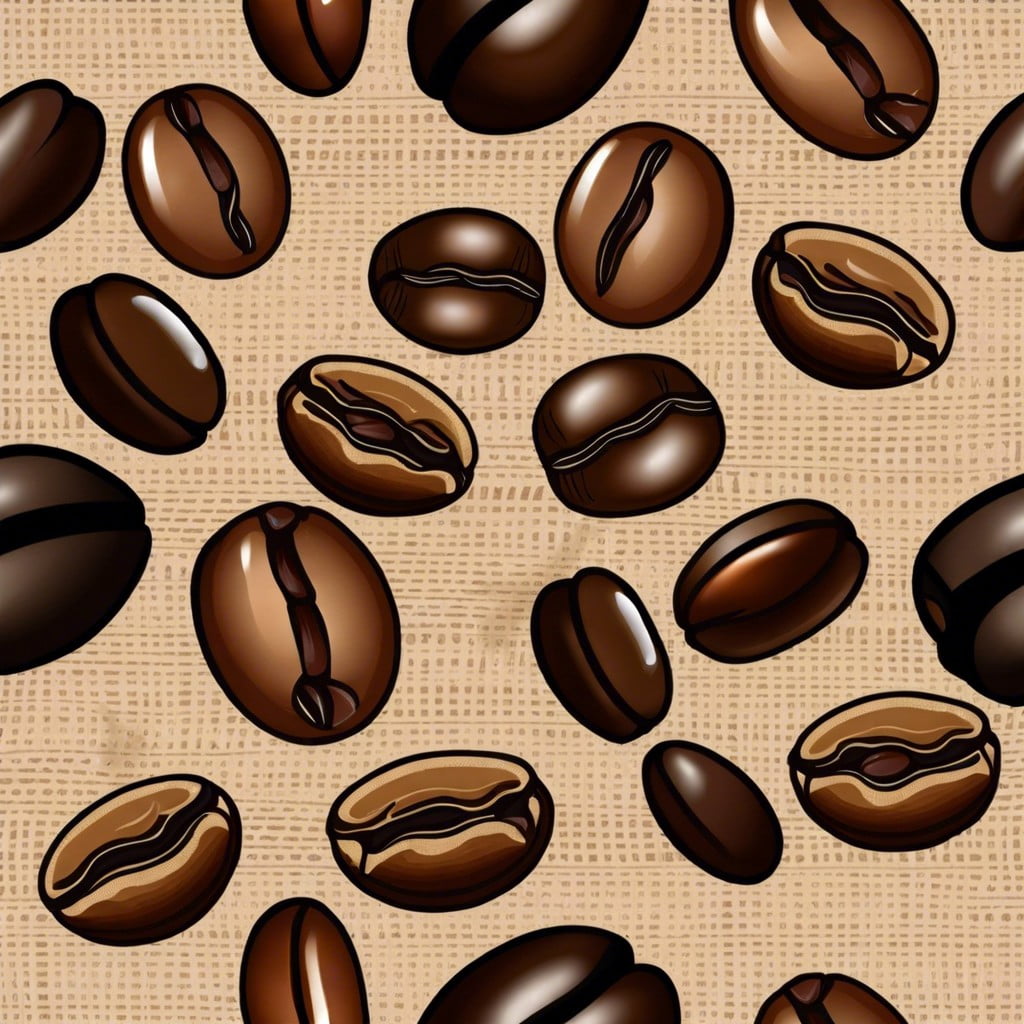Discover the different types of coffee beans and how their origins affect flavor and aroma.
Types of Coffee Beans

Arabica and Robusta are the two primary coffee species you’ll encounter most often. Arabica beans, known for their smooth, complex flavor profiles, thrive in high altitudes and are predominantly grown in Latin America. They’re often the go-to for black coffee aficionados due to their subtle, often fruity undertones.
On the other hand, Robusta beans pack a punch with their bold, robust flavor and higher caffeine content. These beans flourish in lower altitudes and warmer climates, commonly found in Africa and Indonesia. Perfect for those who crave a strong espresso kick, Robusta also tends to be more disease-resistant and economically viable for farmers.
Liberica and Excelsa are less common but offer intriguing tastes and aromas. Grown mainly in the Philippines and Malaysia, Liberica beans are larger and more irregular in shape. They offer a unique woody and smoky profile, distinct from their more popular cousins. Excelsa, often used to provide depth to blends, boasts tart, fruity notes that can truly elevate a coffee blend.
Each type significantly affects the final cup, telling a story of its origins through its distinct flavor notes and aromas. The diversity among these beans caters to a broad spectrum of palates and preferences, making the exploration of coffee types an endless journey of discovery for enthusiasts and casual drinkers alike.
Coffee Bean Origins
Coffee plants thrive in what is known as the Bean Belt, which stretches between the Tropics of Cancer and Capricorn. This geographic band includes parts of Central and South America, Africa, and Asia.
Brazil leads globally in volume, known for its vast plantations that produce beans with a chocolatey, nutty profile. Colombia follows closely, where the mountainous terrain yields beans with a rich, mild flavor often preferred by American coffee drinkers.
Africa, particularly Ethiopia where coffee is believed to have originated, offers diverse flavors. Beans here can range from floral and fruity to deep and wine-like, due to the varied climates and altitudinal differences within regions.
Southeast Asia, especially Vietnam, focuses on robusta beans, which are higher in caffeine and impart a stronger, somewhat bitter flavor compared to the more aromatic and acidic arabica beans predominant in other regions.
Understanding these origins helps aficionados appreciate the variety and anticipate the flavors they prefer in their brew.
Roasting Coffee Beans
Roasting transforms green coffee beans into the aromatic brown beans we’re familiar with. This process not only develops the flavor but also affects the body and acidity of the brew.
Light roasts are perfect for more mild, aromatic flavors, preserving the original character of the bean. Medium roasts strike a balance, enhancing sweetness and complexity without overpowering subtleties. Dark roasts deliver bolder, richer flavors, with noticeable bitterness that many coffee aficionados cherish.
The duration and temperature of roasting impact the coffee’s caffeine level and taste. Contrary to popular belief, lighter roasts retain more caffeine because they spend less time at high temperatures.
Understanding these aspects can dramatically improve your brewing results, turning a good cup of coffee into a great one.
Brewing Techniques
Different brewing techniques can dramatically affect the flavor profile of your cup of coffee. Let’s dive into some popular methods:
Drip brewing is perhaps the most common way, favored for its convenience and consistency. Water passes through ground coffee in a filter, extracting flavors over a few minutes. The result? A clean and clear taste.
Espresso, on the other hand, uses high pressure to force hot water through finely ground beans. This method packs a punch, yielding a rich and robust shot with a delightful crema on top.
For those who enjoy a fuller body with a bit more grit, French press is a great choice. Coarse grounds steep directly in hot water, allowing oils and fine particles to remain in the drink.
Cold brew takes patience but offers a unique reward: smooth, sweet coffee without the acidity. Coarse grounds steep in cold water for 12 to 24 hours, making it a refreshing alternative especially during warmer months.
Each method unlocks different flavors and qualities in coffee, inviting enthusiasts to experiment and discover their favorite brew.
Environmental Impact of Coffee Production
Coffee cultivation can significantly affect our planet. Here are a few key impacts:
Deforestation is a major concern as forests are cleared to make way for coffee farms, reducing biodiversity and contributing to climate change. Sustainable farming methods, such as shade-grown coffee, help preserve natural habitats and support a wider variety of plant and animal life.
Water usage is another critical factor. Coffee processing is water-intensive, especially the washing process. By implementing water-saving technologies and recycling methods, farmers can lessen their environmental footprint.
Chemical runoff from pesticides and fertilizers can harm local water supplies and wildlife. Organic farming practices avoid these chemicals, promoting healthier ecosystems and reducing pollution.
Soil degradation results from unsustainable farming practices. Crop rotation and organic fertilizers can improve soil health, maintaining its fertility and reducing erosion.
Each cup of coffee we enjoy starts with practices that may harm our environment; opting for sustainably grown coffee can help mitigate these effects.